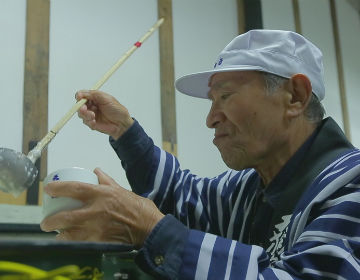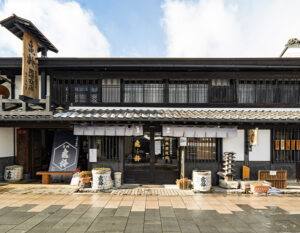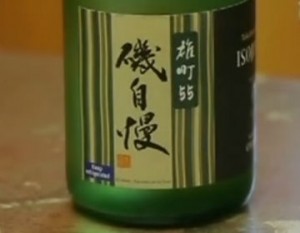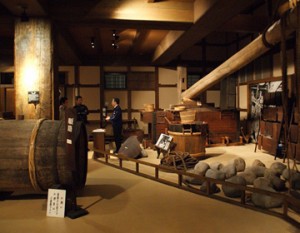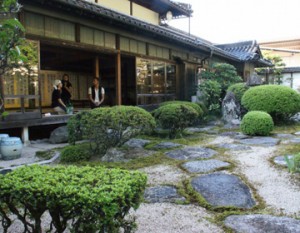The fragrance of malt is the key to the taste of “sake”
Shata Shuzo has a long history, established in 1823. The famous label ”Tengumai”, made with the spring waters of the sacred Hakusan mountains and the ”sake” rice grown in the Kaga plains, is the leading ”sake” of the Hokuriku region. Once you step into the brewery, you breathe in the fragrance of the malt. Nakata decided to observe the processes in the making of the premium label. The first step was sprinkling the rice malt onto steamed rice, which is maintained at around 30 to 36 ℃ to cultivate the malt. It is as humid as a sauna. ” Naka, the advisor ”toji” told us ”The fragrance of the malt is the key to making good ”sake”.” This is the starting point to Japanese ”sake”.
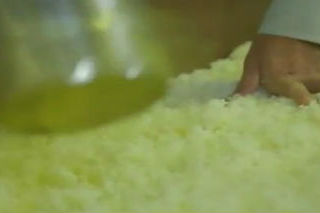
Premium label made with the fusion of 3 ingredients
Once the malt is done, preparation is started with the malt, the steamed rice, and water. When we peeked into the big tank, the yeast was producing carbonated gas as though it were alive. Nakata commented in excitement, ”Now I understand what they mean by ”sake” being a living creature.” It takes 22 to 23 days to complete ”junmaishu”. We tasted the ”sake” on its 4th day. A sweetness spread throughout the mouth. On the 5th day, the ”sake” becomes full-bodied, surprising Nakata. ”It’s amazing how the taste is so different in just one day!” On day 11, a slight sting appears, making it taste more like ”sake”. ”On day 15, amino acids are generated and that creates a uniformity in the taste.” we were told.

A mellow taste brought together with acidity
We tasted freshly made ”sake”. ”Yamahai jikomi” refers to the ”sake” making process that does not involve ”yama oroshi” (the process of grinding rice), resulting in ”sake” with a higher acid content, and a mellow full-bodied taste. Generally, acid accounts for 1.3 to 1.5 degrees, but the acid content of Tengumai, is exceptionally high at 23 degrees. ”The taste is well-rounded with the acidic aftertaste to top it off.” the president, Kazunari Shata told us. We took a sip and savored the differences in taste. It is apparent that many steps are needed for the ”sake” to reach this state.




